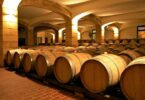The Wolf Post, supported by a Cultural Association, offers a professional service with free access, without subscription.
For this reason, a donation would also be a sign of appreciation for our work.
HISTORY:
Seven centuries of history, timeless beauty and a long future yet to be written. This is Vignamaggio, austere and regal, suspended between the marvelous hills of Greve in Chianti, in Tuscany.
In the patch of fertile land that the English call Chiantishire, Vignamaggio occupies a special place to the point that its past is, inevitably, also steeped in suggestive tales bordering on the surreal. One of these tells that Mona Lisa was born in Vignamaggio, the most famous lady in the world, portrayed by the genius of Leonardo da Vinci.
It all began in 1280 when the Gherardini, a noble historical Tuscan family, settled a hill overlooking the valley of the Greve river in the castle of Montagliari. Exiled, they organize violent assaults in revenge that prevent the transport of food to Florence.
In 1302, the Gherardini Castle was razed to the ground by the offensive of the Florentine Republic, forcing the family to move to the other side of the valley, in Vignamaggio.
In 1404, the first document was drawn up which testifies to the presence of Vignamaggio’s wine business. Thus the story of the Vignamaggio winery begins with the parchment of Amidio Gherardini, one of the two sons of Cione Gherardini.
In 1421, due to major debts, the Gherardinis ceded the estate to the Gherardi family, silk merchants from Florence. This is the year that serves as a watershed for a new beginning of Vignamaggio. An important date also for the legend born around the possible birth in the estate of Lisa di Antonmaria Gherardini, also known as Lisa Gherardini, known as Mona Lisa. The sale of the Vignamaggio estate by the Gherardini family to the Gherardi family is, in fact, far before the birth of the woman, which took place in 1479. Although it seems more likely that Mona Lisa was born in Florence in Via di Maggio, the legend that in some way, connected to Vignamaggio has undoubtedly increased the charm of a place that is already rare in itself.

© Vignamaggio
The glories of the Full Renaissance, in 1500, indicate Vignamaggio on the map of the people of San Niccolò in Montagliari.
In 1600, thanks to the investments of the Gherardi family, Vignamaggio became a complete farm with the implementation of the vineyard and the creation of orchards and olive groves, an oil mill, the ovens, the well, the stables, the chicken coops, the cheese room and a private chapel.
In 1700, the farm produced and sold wine, oil, wheat, and barley. The farms owned by Vignamaggio were seventeen and each one produced its own specialties. In 1716, Cosimo III, Grand Duke of Tuscany, officially defined the Chianti production area.
In 1800, the agricultural crisis that hit Tuscany forced the Gherardi family to sell the villa which passed into the hands of various owners throughout the century.
In 1900, vineyards and olive groves became the soul of the Chianti landscape, to the detriment of small crops of cereals and orchards.

In 1924, a group of 33 winegrowers met in Radda and founded the first Italian consortium of winemakers: Chianti Classico.
In 1926, the Conti Sanminiatelli, new owners of Vignamaggio, made the villa an important cultural and artistic center, with famous guests and celebrations known at the time.
In 1987, the estate passed to the Nunziante family, who restructured the buildings and gardens, renovating the cellars and opening the estate to the public.
Today, Vignamaggio has embarked on an ambitious restoration project, led by architect Patrice Taravella which includes the expansion of the gardens, the renovation of the buildings and the extension of agricultural activities. All this to make Vignamaggio an experience to be lived at its best, transforming the farm into a cutting-edge organic farm.

© Vignamaggio
ORGANIC FARM:
Although Vignamaggio is internationally known for its excellent production of Chianti Classico and an equally valuable PDO Extra virgin olive oil, the company is also an oasis dedicated to the production of fruit, vegetables, jams, preserves and flours. The ancient Verna wheat bears the name of Monte Verna, in Tuscany, where, in the 1950s some friars used to cultivate this variety. It arises from the crossing of two historical types of wheat from the Tuscan Sementi Authority: East Mottin 72 wheat and Mont Calme. The experiment aimed to find a more robust variety. Verna wheat has kept expectations, confirming itself as resistant to atmospheric agents and diseases. The intense and decisive aroma is one of its most appreciated characteristics. After being forgotten for many decades, today it is one of the leading grains of companies such as Vignamaggio that invest in quality and sustainability.

©Vignamaggio
The organic orchards arise in various points of the Piano di Montagliari, an unspoiled area along the banks of the Greve river. Plum trees, apples, apricots, pears and pomegranates but also wheat fields. Close to the woods, in the coolest area of the farm, in a valley on the banks of the Greve, where the river narrows and where the area of the ancient mills begins, the small fruit plant with blackberries, raspberries and currants begins. A real flagship of the company, together with the Casa dell’Orto and the organic artichoke.
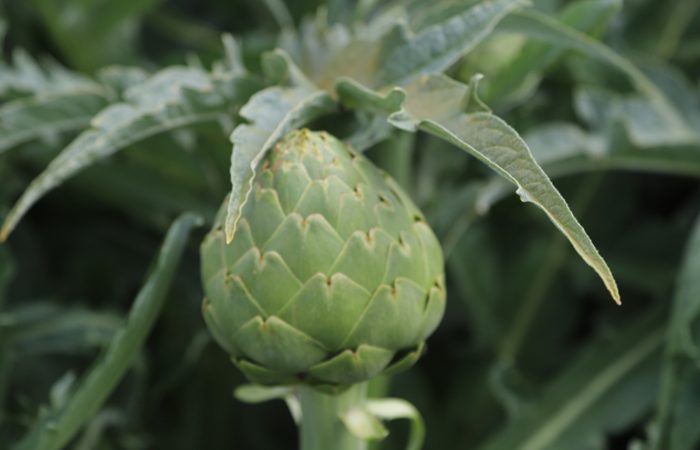
©Vignamaggio
Jams:
From the tree to the jar. The first ingredient of Vignamaggio jams is fruit from the organic orchard. 70% fruit, organic cane sugar and no preservatives. Health and taste to spread on a slice of rustic bread or to prepare delicious cakes and pies.
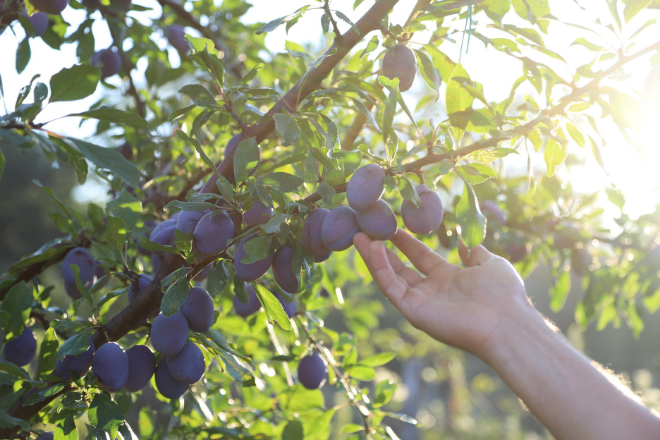
©Vignamaggio
Preserves:
Vignamaggio preserves are produced exclusively with the farm’s organic vegetables. Delicious and naturally organic, they release all the flavors and aromas of the summer.
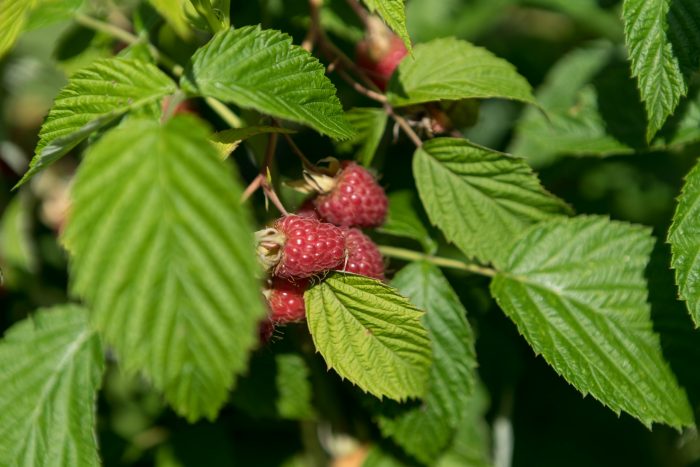
©Vignamaggio
Cereals:
Vignamaggio has a fine production of ancient grains, among which the variety of soft wheat Verna stands out, characterized by an intense flavor.
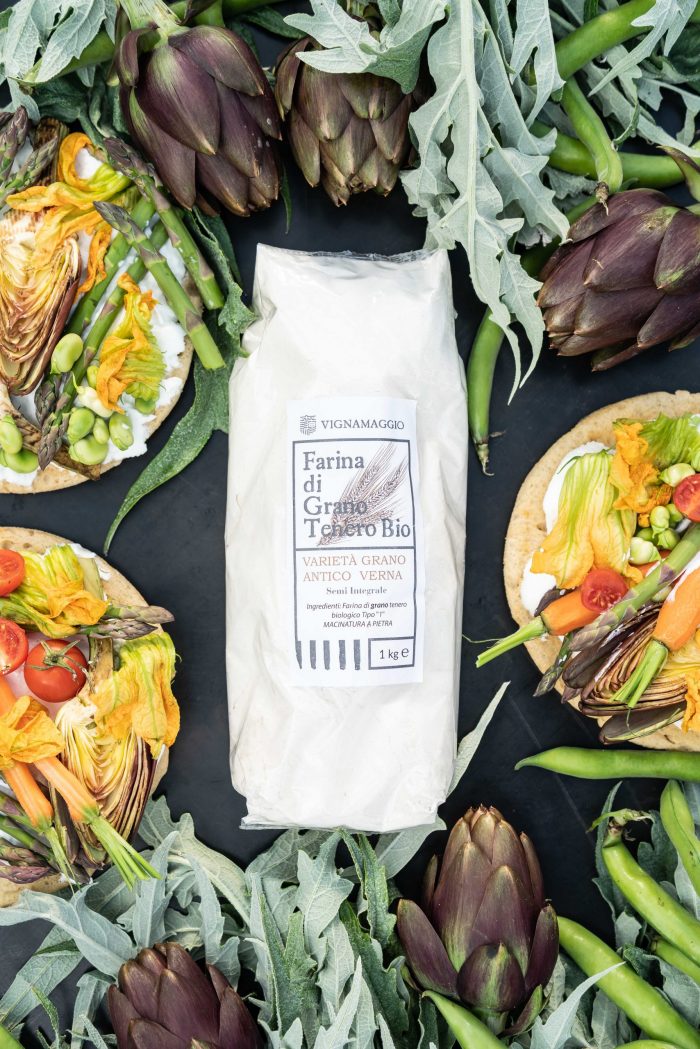
©Vignamaggio
EVOO:
Along the sunny slopes of Vignamaggio the 7,000 centuries-old olive trees of the company dominate. Expanses of fine trees that produce precious organic olives, hand-picked and pressed within a few hours, to keep their freshness intact. Vignamaggio extra virgin olive oil stands out for its tingling, intense flavor and fruity aroma.
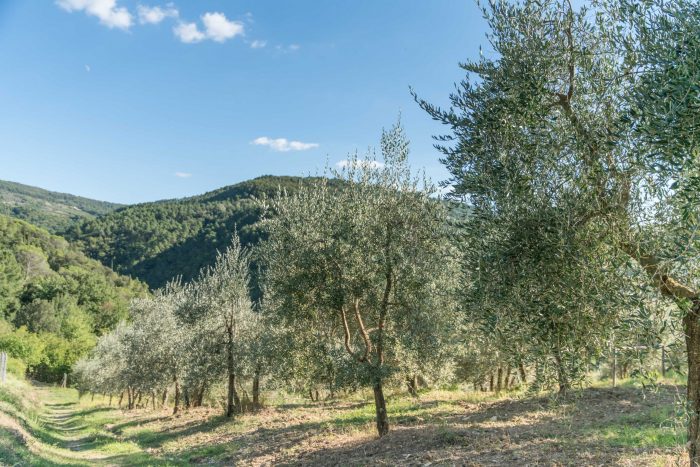
©Vignamaggio
Rich in polyphenols, Vignamaggio EVOO is produced with the cultivars: Frantoio, Moraiolo, Leccino and Pendolino. It is characterized by a green color with golden reflections and an intense fruity aroma with light herbaceous notes. The flavor is intense, mitigated by the round note of Moraiolo.

©Vignamaggio
WINES:
A six hundred year long wine history, a priceless heritage of history and culture, make the Vignamaggio cellars truly unique.

©Vignamaggio
Today, Vignamaggio is an organic farm with a state-of-the-art cellar and produces high quality wines, expressing the peculiarities of the different terroirs of the estate.

©Vignamaggio
The forty-two plots are distributed in seven areas (Prenzano; Petriolo; Solatìo; Orto; Poggiarelli; Vitigliano; Prato and Querceto) on 65 hectares of vineyards at an average altitude of 350 meters above sea level, mainly facing south-west and East. The Prenzano-Petriolo area is made up of boulder sandstone. Going down towards the Greve river (Solatìo and Poggiarelli), the soils become more clayey and the same goes up on the other side of the valley (Orto). In the Panzano area the soils are looser and less clayey (Vitigliano, Prato, Querceto).
Vignamaggio has undertaken a project for the recovery of local vines, called “Progetto Arca di Noè”, selecting genetically less known vine strains that have always been present in the area.

©Vignamaggio
Vignamaggio wine is obtained from grapes grown according to the principles of organic farming, without chemical fertilizers, synthetic pesticides and herbicides.
HOSPITALITY:
Vignamaggio is also hospitality. A stay immersed in the lush greenery of the Chianti hills, far from the noise of the city, in the total sharing of good food, created by skilled hands with Vignamaggio products.

© Vignamaggio
The company offers the opportunity to stay in the charming guesthouse with eighteen rooms. A fresh and contemporary décor, without sacrificing architectural elements, characterizes the pension surrounded by a panoramic garden from which you can glimpse Florence peeking out among the olive trees.
For an exclusive stay Vignamaggio also has at its disposal some splendid “Case al Prato”, in a clearing among oak woods and vineyards. Three distinct units united by a classic and elegant country style, surrounded by a lush garden dotted with fruit trees and roses.

©Vignamaggio
WHERE:
VIGNAMAGGIO
Greve in Chianti, Florence
ITALY
RESERVATIONS
Our booking office is available every day from 8:00 to 20:30.
Telephone: +39 0558546653
Email: lapensione@vignamaggio.com
Email: prato@vignamaggio.com
CONTACT US
Casa dell’Olio | Vignamaggio in Piazza
retail@vignamaggio.com
Online Shop
eshop@vignamaggio.com
Wine Sales
stefano@vignamaggio.com
PR & Media
giulia@vignamaggio.com




